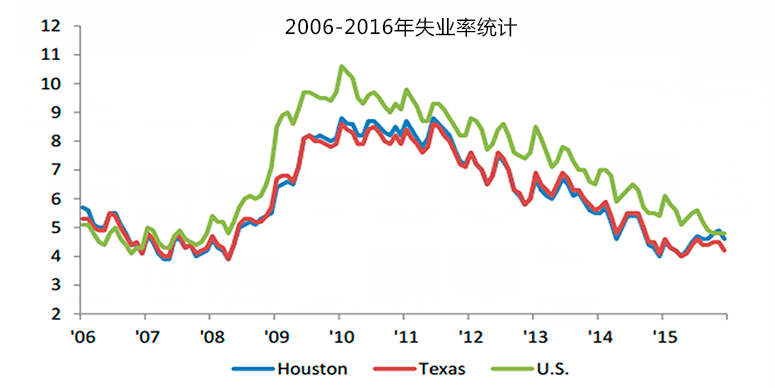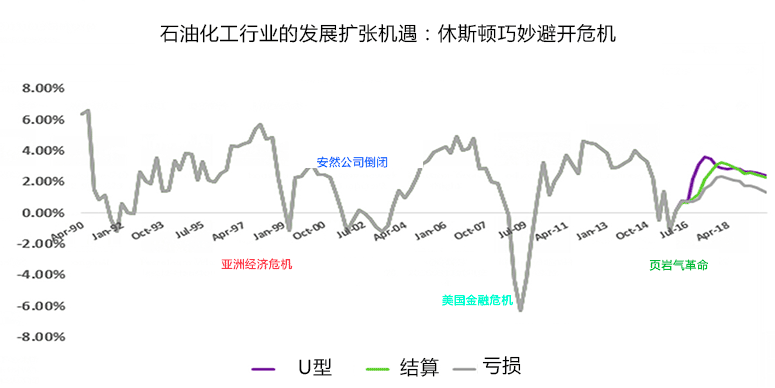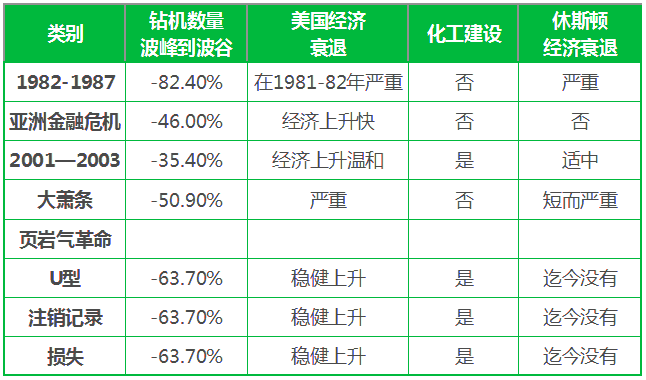Over the past 6-12 months, new fears of local economic slowdowns have begun to sweep oil hubs worldwide. From Oslo to Singapore to Rio de Janiero to Houston, residents are becoming increasingly nervous given their reliance on the oil industry for jobs and growth.
We asked Houston-based Paul Ehrsam, Market Investment Director for U.S. Trust, about the state of the Houston economy. “It has performed better in the oil collapse than people thought initially. The memories of those who lived in Houston during the 1980s have been on peoples’ minds, but we aren’t seeing that kind of doomsday scenario,” Paul told Oilpro. He remains relatively optimistic on the Houston outlook, and believes the Houston economy is in the 6th inning of absorbing the oil price crash.
As the oil capital of the world, Houstonians do have good reason to be concerned. During the 1980s oil collapse, the employment section in the local papers got thinner, subdivisions emptied, loans defaulted, and banks failed. Could this downward spiral for the Houston economy repeat? Local leaders and think-tanks say no, but even without a 1980s-ramification-repeat, things are tough and likely to get tougher.
Financial experts like Paul Ehrsam believe 2017 and 2018 will be years of growing economic difficulty for Houston. “There is a lag effect on the economy from oil prices. If oil prices remain sub-$45, we would expect to see more effects from the oil slowdown in the real estate market during 2017/2018 than we’ve seen so far,” Paul says.
enter image description herePaul Ehrsam, Investment Director, Houston Market at U.S. Trust Bank of America Private Wealth Management
While Houston is less reliant on upstream employment than it has been in the past, O&G is still the city’s leading economic engine, and now that engine is sputtering. Here are 5 important differences between 2016 Houston and 1980 Houston that local leaders believe will mitigate economic fall out from the oil industry’s ongoing disaster.
1. Houston’s Employment Base Is More Diverse
In 2011, upstream employment comprised just over 1/3rd of Houston jobs, versus more than 2/3rds prior to the 1980s oil downturn. Even at the bottom of the recession back in 1987, O&G still made up 1/2 of Houston jobs according to the Greater Houston Partnership (GHP).
The non-energy sector, which comprised less than a quarter of base employment in 1986, reached the 50% mark in 1999 and remained about one-half of Houston’s economic base through 2011. In our conversation with Paul Ehrsam, he pointed to hiring in health care, the Houston ship channel, and petrochemical facility construction, which are growth areas relatively well insulated from the oil price crash.
So, yes, Houston’s employment base has diversified. But with 1/3rd of jobs still upstream related, it’s important to note that diversity has only come so far. There is still a great deal of exposure here.
2. Depending On Whose Numbers You Believe, Houston Job Losses Have Not Been As Severe… Yet.
By the end of the 1980s downturn, 221,000 jobs had been lost in the Greater Houston region, translating to one in every seven. This downturn hasn’t been as severe (yet), although estimates of Houston upstream job loss have ranged from 29,000 for 2015 (by the Greater Houston Partnership) to 50,000 by the Texas Monthly. The GHP forecasts 18,000 more job losses for the Houston energy sector to come in 2016. This seems low to us as layoffs have recently started to swing from the field level into corporate headquarters.
Slowing immigration of jobless workers is offsetting slowing job creation, helping keep the unemployment rate in Houston relatively low for now.
3. The Texas Medical Center Has Grown And Is A Job Magnet
A January Texas Monthly article noted that the growth of Houston’s employment diversification since the 1980s is the most frequent factor cited by those who argue that the city is better cushioned from oil crashes today than it was in the 1980s.
Jobs growth at the Texas Medical Center is cited as the primary case-in-point. The Texas Medical Center says it employs 106,000 and remains a job magnet. These jobs are high paying and counter-cyclical, giving Houston economic insulation to oil that it did not enjoy in the 1980s.
4. Houston’s Economic Drivers Have Evolved
The University of Houston Bauer College of Business recently identified the three current drivers of the Houston economy: 1) US economic expansion; 2) a collapse of drilling not seen since the 1980s; and 3) a petrochemical construction boom. In the 1980s, there was only one driver: the collapse of drilling.
Meanwhile, lower commodity prices are benefiting the petrochemical industry. Houston is seeing a great deal of expansion to the south and east as a result. And long-lead time real estate development projects that were initiated over the past few years will continue regardless of what oil does, helping offset the economic slowdown in the O&G sector.
Around $50 billion is currently being invested in new downstream facilities along the Gulf Coast. If petrochemical construction is added into the jobs forecast (cf. figure 7) for Houston, which classifies construction workers as a temporary injection of O&G employment in Houston, “it is just enough to keep the Houston economy out of recession,” according to the Bauer report.
This downstream growth, coupled with moderate US economic growth, “are working to offset the worst drilling downturn since the 1980s.”
enter image description hereSource: Bauer Report
Again, as with employment, economic driver diversity is a stop-gap that is new and improved since the 1980s, but it is not a fail-safe measure. O&G is still a big driver for Houston – from travel, to conferences, to rent payments, to purchases from local businesses, the impacts of low oil prices are being felt.
5. The Business Cycle Complexion Is Different
The five periods in the table below (from the Bauer report) display the largest decline in US drilling activity in modern history. The 1980s downturn eventually saw an 82% fall in drilling. While the current O&G situation is about as bad, other business cycle factors are different. For example, Texas banks were devastated in the 1980s and the US underwent a severe recession.
enter image description hereSource: Bauer Report
The complexion of this business cycle is different than in the 1980s (at least so far). The downturn to date is largely contained in the upstream sector, unlike during the 1980s, when the net of contraction ensnared the broader US economy and Texas banks.
Conclusion
While the Houston economy has unquestionably diversified over the past 30 years, energy remains the economic powerhouse of the Gulf Coast city.
Paul Ehrsam is advising Houston clients from the energy sector to stay positive. “Houston is a relatively diversified economy versus what it was 30 years ago. Even with lower energy prices, and the adverse effects on one of our major industries, we are still seeing net job growth in Houston,” he told us. Like Houston, his energy sector clients have diversified financial portfolios, which they are relying on as their professional life grows increasingly uncertain.
Will this downturn have as severe an impact on the Houston economy as 1980s downturn did? It doesn’t appear so, but the storm is still raging. An economy the size of Houston is an incredibly complex machine with many puts and takes. For example, slowing immigration of job seekers will act to support the unemployment rate, offsetting a slowdown in job creation. Many workers have moved to Houston in recent years, seeking employment in one of the nation’s hottest job markets. The entrance of jobless workers will slow now.
If the 1980s oil collapse ignited a 5-alarm fire in Houston, perhaps this time we are looking at something more like a 2- or 3-alarm fire. In Houston, the flames will keep rising over the next 12-36 months, but diversification is a powerful flame retardant and may yet save the city from a 1980s style meltdown.

 石油圈
石油圈



